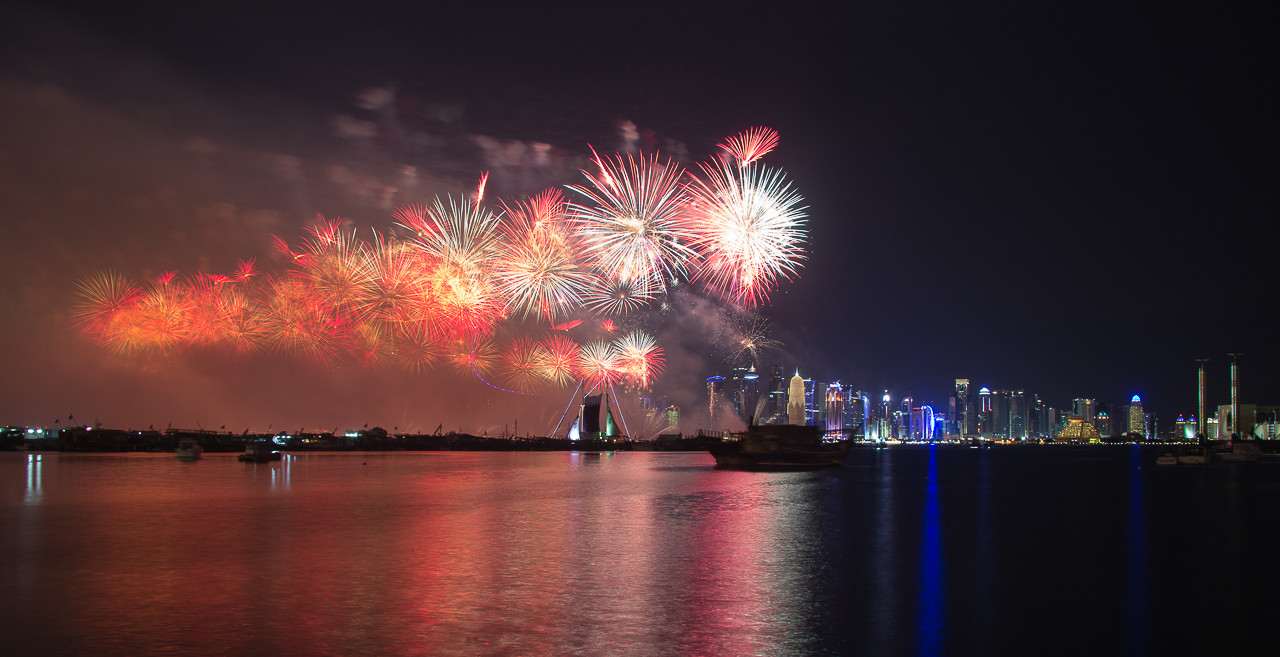It is not just the blues, but also the fireworks given a salmon colour in the water. The same you see in sunset pictures.
It is because of infinite amounts out surface normals in the water. If the water surface was completely uniform, you would see a perfect mirror image in it. But the waters stirs, so you get infinite surface normals (facings) which creates infinite tiny little mirrors from your gaze (camera) to the lights.
Your most significant blue light comes from a large very bright vertical illuminating structure, which means the surface normal mirrors will have higher probability to hit a point that shoots out a blue ray (think of it as ray tracing). On top of that it is a very dark area of the image so it will seem more apparent.
The second most significant blue line is from the dome which also has some volume, but more incidental, but it is still on the top of the dynamic range of that side of the image and dark waters. Remember that the darkest to brightest is not linear, and the highs are clipped, so it is actually proportionally brighter than it seems.
Then you have the fireworks that also have reflection intensities proportional to how tall and bright the explosion is above that water line.
And you have bright whites (that are clipped, on top of the dynamic range in the image and thus very apparent in the water) but the lines are broken by some obstruction in the water that changes the angles - possible ice or the aftermath of a boat.
You can control the camera rendition of these colours in saturation levels, and in how you deal with highlights and compress the dynamic range from the 14bit raw signal.

Here you see the image with another dynamic range transfer function - it is not as good as it would be if I had worked on the 14bit raw data, but it shows the principle nonetheless. The main issue is that the colours are clipped, so they dont retain the same R/G/B chromaticity information.
You might have to shoot HDR images to get the result you want.

If you shoot directly to jpeg, make sure it doesn't boost contrast and saturation, and find the best custom white balance.





